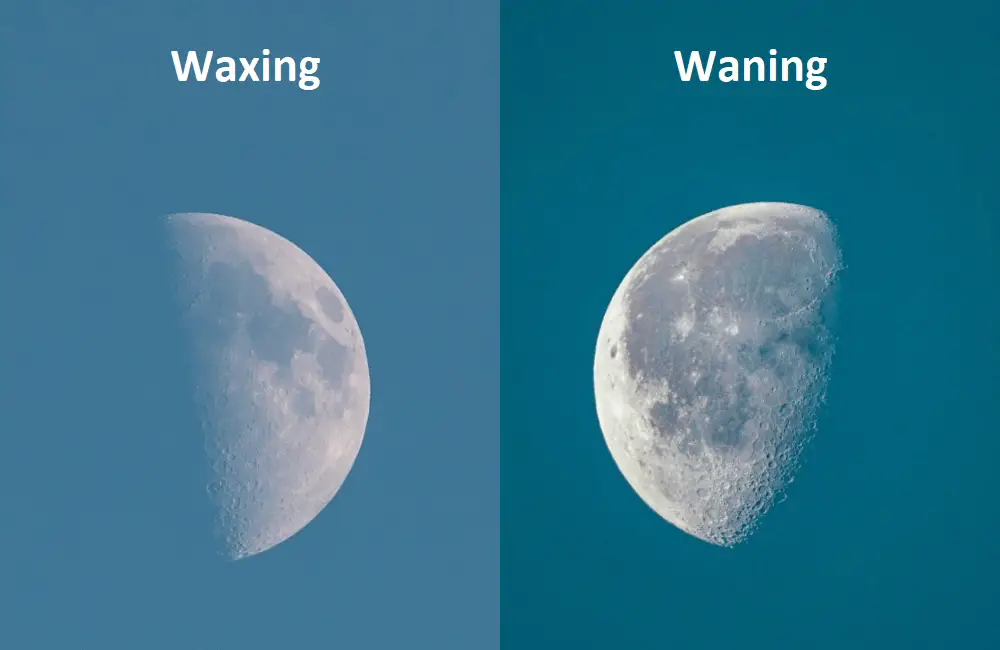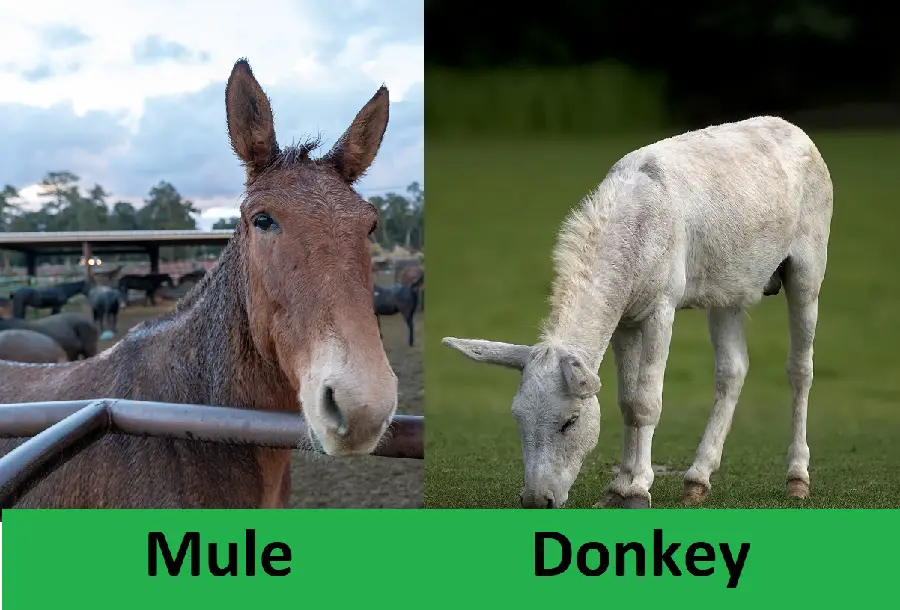Waxing and Waning: 4 Key Differences
Have you ever looked at a moon and wondered why it is shaped the way it is? Or thought to yourself – will the moon grow to be a full moon now or shrink each day? If you have done any of the above, this article will provide all the answers to your questions.
Whether a moon is at its growing phase o shrinking phase can be determined by understanding whether it is waxing or waning.
Many people get confused by these terms and might use them wrongly. However, each term has its separate features and is totally different from each other. Our waxing vs waning moon will provide you with all the details you need on them.
Waxing vs Waning: An Overview
Both waxing and waning are terms related to phases of the moon. The main difference between waxing and waning is that waxing refers to something getting closer to its full size; in our case, it’s the moon. On the other hand, waning refers to something getting closer to its smallest size.
So, the waxing phase is the phase when the moon develops to a full moon from a new moon. And the waning phase is the opposite – the moon reaches complete darkness from a new moon.
What Is Waxing?

To understand waxing, we first need to understand the concept of a lunar cycle. During a lunar cycle, the moon goes from a new moon to a full moon and then back to a new moon. This whole cycle is comprised of 29.5 days and consists of the waxing and waning phases.
The waxing moon occurs after the new moon appears, as it continues to grow larger each day until it reaches full moon. In the waxing phase, the right side of the moon is illuminated, and it resembles the letter D.
During the waxing phase, the angle between the moon and sun increases from 0 degrees to 180 degrees. The waxing moon has four separate phases –
- Waxing Crescent – here, 1%-49% of the moon is illuminated
- First Quarter – 50% of the moon appears illuminated
- Waxing Gibbous – 51%-99% of the moon appears illuminated
- Full Moon – 100% of the moon can be seen
What’s The Difference Between Solar and Lunar Eclipse?
What Is Waning?

The waning phase occurs right after a full moon and concludes in complete darkness. During the waning phase, the left side of the moon is illuminated, and it looks a bit like the letter “C.”
During the waning phase, the angle between the moon and the sun decreases from 180 degrees to 0 degrees. The waning moon has the following phases –
- Waning Gibbous – the moon is not full in this phase, but it has not reached a quarter moon either.
- Third Quarter – during this phase, 50% of the moon will be illuminated. This 50% is the opposite side of the illuminated 50% during the First Quarter.
- Waning Crescent – 49% to 1% is illuminated on the side opposite of the illuminated side during the Waxing Crescent.
- Darkness – The waning moon ends in total darkness.
Main Difference Between Waxing and Waning
- Waxing is the lunar phase where the moon has just passed its darkest phase, and it continues until the moon reaches its brightest and full form. The waning phase occurs after that and continues until the moon reaches darkness.
- In the waxing phase, the size of the moon gets bigger until it develops into a full moon. During the waning phase, the size of the moon keeps getting smaller until it shrinks into complete darkness.
- The shape of the moon resembles the letter “D” in the waxing phase; this means that the left side looks dark and uneven, while the right side is rounded and bright. On the other hand, the opposite happens in the waning phase, where the right side appears blurred and dark, and the left side looks bright and rounded. The moon looks like the letter “C” in this phase.
- The waxing phase occurs right after a new moon. On the contrary, the waning phase occurs after a full moon.
Some of Our Articles You May Want to Read:
- The Difference between El Nino and La Nina – Just Like Yin and Yang
- Major Difference Between Astronomy and Cosmology
- Difference Between Rip Tide and Rip Current
Waxing vs Waning Moon: The Comparison Table
|
Parameter of Comparison |
Waxing |
Waning |
|
Definition |
The waxing is the phase when a moon has just passed its darkest shape and continues until the moon reaches its brightest shape. |
The waning is the phase when the moon passes its brightest phase and continues until it reaches complete darkness. |
|
Size |
In this phase, the size of the moon is growing larger, or the moon is developing. |
In this phase, the size of the moon is growing smaller, or the moon is shrinking. |
|
Shape |
In the waxing phase, the moon looks similar to the letter “D.” |
In the Waning phase, the moon looks similar to the letter “C.” |
|
Timing |
The waxing phase occurs right after a new moon until it reaches full moon. |
The waning phase occurs right after a full moon until it reaches total darkness. |
Conclusion
Looking at the moon and wondering why it looks different every night is a very common thing. Hopefully, after reading this waxing vs waning article, your confusion regarding the moon’s shape and size will be cleared.
Furthermore, you will now be able to distinguish between a waxing moon and waning moon and know when to wait for the full moon.






